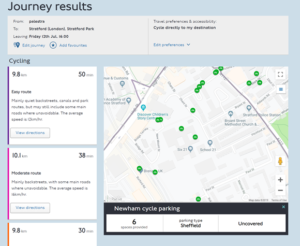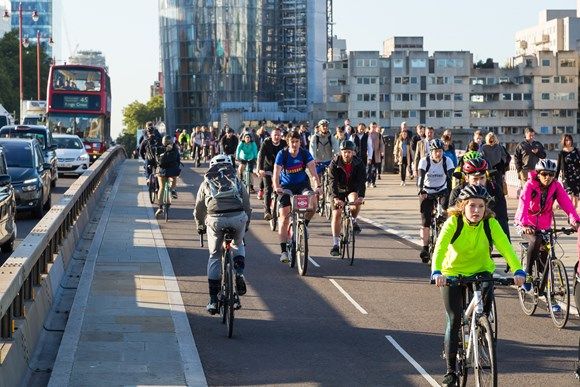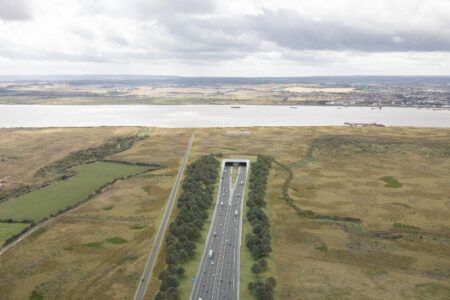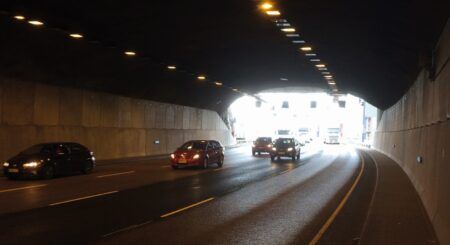As part of its long-term aim of reducing the number of vehicles on the UK capital’s roads, Transport for London (TfL) has launched the world’s largest database of bicycle infrastructure which will help to make cycling in the city easier and more tailored to people’s needs.
TfL research has shown that many people feel uncomfortable about setting off on a bicycle journey without knowing what to expect, particularly when it comes to finding a place to park or a protected cycle lane. The new Cycling Infrastructure Database contains the details of all 240,000 pieces of cycling infrastructure in London, such as bicycle parking spaces and cycle lanes. To create the database, TfL surveyed every street in every London borough to collect data on all 146,000 bicycle parking spaces across London, as well as gathering information on 1,243 miles (2,000km) of cycle lanes, 960 traffic filters and 58,000 wayfinding signs. The database also contains 480,000 photographs of cycling infrastructure, allowing users to see exactly what can be found on-street and where.
The database has now been made available to the London boroughs and has also been released as open data for third-party developers, who will be able to use the data for their own journey planning tools, which will make it simpler for Londoners to plan cycle journeys using their preferred apps. TfL will invite app developers to a ‘hackathon’ later this year to explore innovative ways to use the data to make cycling simpler and easier for more Londoners. The data has already been used to upgrade TfL’s own Journey Planner, meaning that people using the planner for cycle journeys can now see the nearest and most convenient place to park for every journey. It will also be incorporated into OpenStreetMap where it will benefit the many cycling apps and websites that use the dataset.
 The database will also make it possible for TfL and the boroughs to plan future investment in cycling effectively. The database has already been used to develop TfL’s Cycle Parking Implementation Plan, which last month set out how the agency will work with partners across the capital to invest £2.5m (US$3m) in new cycle parking across London, targeting areas of highest demand. TfL is committed to expanding the capital’s cycle network at pace and increasing the proportion of Londoners who live within 1,300 feet (400m) of the cycling network from the current 9% to 28% by 2024. TfL has already doubled the amount of protected space for cyclists since 2016, and is on course to triple this by 2020. New 2018 data shows that cycling in London is at record levels, with the average daily total distance cycled exceeding 2.5m miles (4m km) for the first time.
The database will also make it possible for TfL and the boroughs to plan future investment in cycling effectively. The database has already been used to develop TfL’s Cycle Parking Implementation Plan, which last month set out how the agency will work with partners across the capital to invest £2.5m (US$3m) in new cycle parking across London, targeting areas of highest demand. TfL is committed to expanding the capital’s cycle network at pace and increasing the proportion of Londoners who live within 1,300 feet (400m) of the cycling network from the current 9% to 28% by 2024. TfL has already doubled the amount of protected space for cyclists since 2016, and is on course to triple this by 2020. New 2018 data shows that cycling in London is at record levels, with the average daily total distance cycled exceeding 2.5m miles (4m km) for the first time.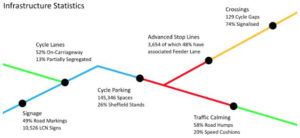
“We’re investing record amounts in cycling as we see the number of people cycling in the capital continuing to increase year on year,” noted Christina Calderato, TfL’s head of planning. “The Cycling Infrastructure Database will make it easier for people in London to plan their journeys, knowing where cycle lanes are and where they can park at their destination. The data will also help us to work with the boroughs and invest in cycling where it is needed most.”